Organic flower bulbs
In February of 2013, we started cultivating flower bulbs in a more sustainable way. In previous years it had become clear to us that not all sorts of pest and disease can be fought with chemical agents, some diseases kept reappearing. It was time for a change.
It all started with a course in soil biology. At that time we realized that there is a better way to obtain healthy quality products: by cooperating with nature instead of opposing it.
Organic
Sustainability led us to an organic way of cultivation. We now carry the SKAL international certificate and grow organic flower bulbs.
Gouden Roerdomp
In 2015, we received the Gouden Roerdomp (Golden Bittern). This prize is awarded by the province of North Holland to the company with the best innovation towards biodiversity.
Soil Biology and no-till farming
The most important part of the transition towards a new way of cultivating is soil biology. Our principle now is a healthy soil to grow our bulbs. To achieve this, we must not destroy what nature has built.
Each layer of soil has its own soil life, consisting of microbes, worms etc. By plowing the land, soil layers are being turned. The beneficial organisms of the upper layer are turned under and the soil life of the lower layer comes to the top. Both habitats are disturbed by turning the layers.
To keep the layers intact, no-till techniques must be applied. In agriculture, no-till farming is already on the rise. If plowing is needed, it should be done very undeep, in order not to destroy the soil life. A good soil structure is not achieved by deep tillage, but by processes of the living organisms in the soil.
Mixed green manure

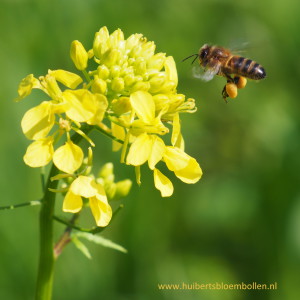
Every plant secretes certain substances by its roots. These substances feed the microbes in the soil which results in a collaboration between beneficial funghi and plants. If these mycorrhizal funghi are given the chance to grow, they form networks within the soil that support and protect the plants during their growth.
Each type of plant secretes different substances, each having their own good qualities. Biodiversity in green manure is very beneficial for soil fertility.
We use a mix of 11 varieties, like corn varieties that root deeply and improve the soil structure, leguminous plants that capture nitrogen from the air and give it off to the soil later, and different crucifers that keep away harmful nematodes. A healthy, vital soil has an optimum resistance, and is less susceptible to diseases.
Wildflower field margins
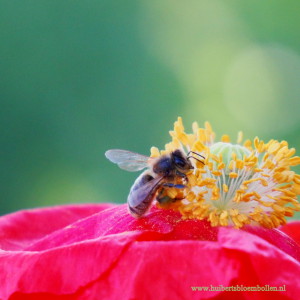
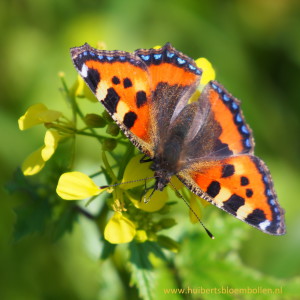

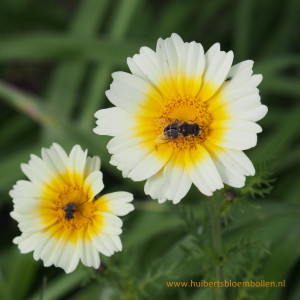
Composting
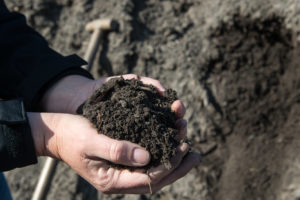
Planting under sods of mixed green manure
Before we plant new bulbs the green manure has to be mowed. Thus a dense sod of green manure is formed.
We plant our bulbs with a special planter. It raises the sod, plants the bulbs under it, and puts the sod back in its place. The bulbs are now in the ground and the green manure can continue its beneficial effects for the soil.
Moreover the green manure forms a blanket against the cold so there is no need to cover the ground with straw. This procedure saves many hours of work by tractor, as well as large quantities of fuel. All in all this is better for the soil and better for the environment.
Throughout the winter the green manure secretes nutrients and protective substances in the root area of the soil, through which it is passed on to the bulbs.
Now the bulbs have a good start of the new growing season.


